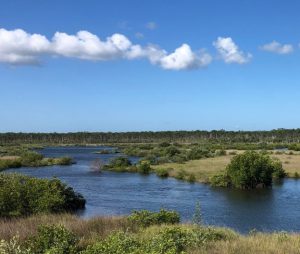
August is National Water Quality Month, which means it is a great time to learn a little bit about the water in our area and actions we can all take to ensure our waterways are clean and healthy.
The Clean Water Act was passed in 1972, making it illegal to dump large amounts of toxic materials into lakes, rivers, and oceans. Over fifty years later, we are still working to ensure that everyone – humans and wildlife – have access to clean water. In the past, the main sources of pollutants came from the dumping of industrial effluents. While this is still an issue, much of our pollution now comes from non-point sources, meaning you cannot point at the single source of pollution. Instead, smaller amounts of pollutants in the forms of chemicals and pesticides used at home and businesses, fertilizers from agricultural runoff and yards, and nutrients leaking from septic systems all contribute.
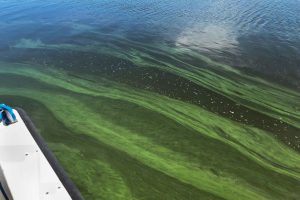
Nutrient pollution is one of the most common problems facing our waterways. Plants need nitrogen and phosphorous to live, and these nutrients are found naturally in the environment. However, humans often add more nutrients to agricultural lands or lawns in the form of fertilizer to encourage plant growth. Unfortunately, much of those nutrients wash into our lakes, rivers, and ocean, causing elevated nutrient levels in the water and acting as fertilizer for algae. The resulting algae blooms decrease water clarity and may outcompete underwater plants. In addition, the process of large algae blooms decomposing decreases the amount of dissolved oxygen in the water, making it difficult for fish and other organisms to survive. In order to maintain healthy aquatic and marine ecosystems with clean waters and plentiful fish, it is imperative that we reduce the excessive input of nutrients that has been taking place over the past decades.
What are ways that my community and I can help decrease nutrient pollution?
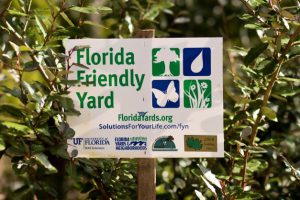
Fertilizing like a Floridian. Avoid fertilizing in the summer, when heavy rains are more likely to wash it into the nearest watershed. We should also choose fertilizers that use slow at least 50% slow release nitrogen and no phosphorous, as Florida soils are naturally rich in phosphorous.
By incorporating Florida Friendly Landscaping you can also have a yard of native plants that are adapted to your local habitat and therefore require less watering, fertilizer, and generally less care (which means it is easier for you too!)
Protecting wetlands and natural habitats. If water travels more slowly through areas of vegetation and permeable surfaces, fewer nutrients will make it into our water bodies compared to water traveling over areas of bare dirt or asphalt.
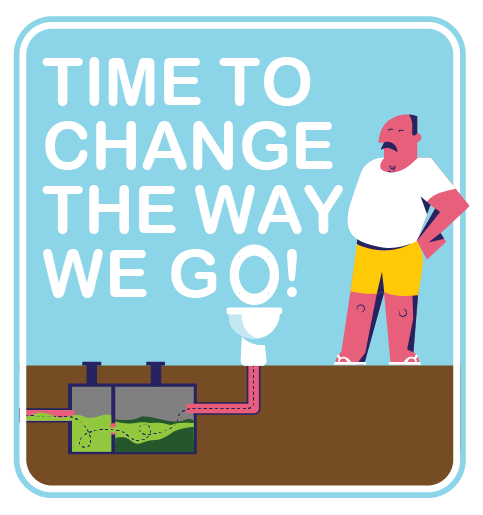
Replace traditional septic systems with more advanced septic systems, or switch to sewer. Septic systems were originally designed to protect human health, but they do not remove nutrients. As a result, the nitrogen in our wastewater leeches into watersheds and springsheds. We now know it is important to treat wastewater to remove excess nutrients to avoid nutrient pollution and algae blooms. If homeowners on septic have the option to switch to a sewer system, they should do so. There are also new nutrient-reducing septic systems that can be installed in homes that do not have access to sewer lines. Check with local government agencies to see if there are upgrade incentives available to help pay for the associated costs.
Reducing our water use so puts less pressure on the water resources we do have, so try to find at least one new way to reduce your consumption – use a rain barrel to collect rainwater to use in the garden, install a low-flow shower head, and turn off the tap while brushing your teeth.
How can I find information about the water quality in my area?
If you are interested in the water quality data for our estuaries, rivers, and springs, you can visit the St. Johns Water Management District water quality data and tools page. As a coastal and marine scientist, I especially love the access to the surface water quality sampling in the district, which allows me to check the levels of nitrogen, phosphorous, and dissolved oxygen at many estuarine sites.
If you live near a lake, you may want to check out the Florida LAKEWATCH program – whether it is to read their report for your area or to get involved yourself! Florida LAKEWATCH is citizen volunteer lake monitoring program coordinated through UF/IFAS, who provide residents with the training and supplies needed to record data and collect monthly water samples.

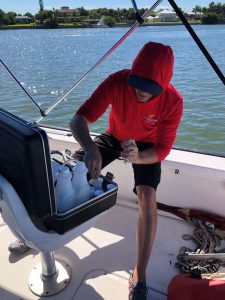
Check out your county’s department of environmental management to see if there is local data available to residents. Volusia County has a new website where they report the data from their sampling of over fifty sites in the county. You can search for a specific site or look at the map and choose different parameters, such as total nitrogen, chlorophyll a, and pH. These tools provide a great opportunity for residents to learn about the water in our local areas and they help scientists and managers understand how regulations and conservation measures are working and what issues we still need to address.
Our water relies on us just as much as we rely on it, so help spread the world about water conservation and do what you can to protect our natural resources!
 1
1
